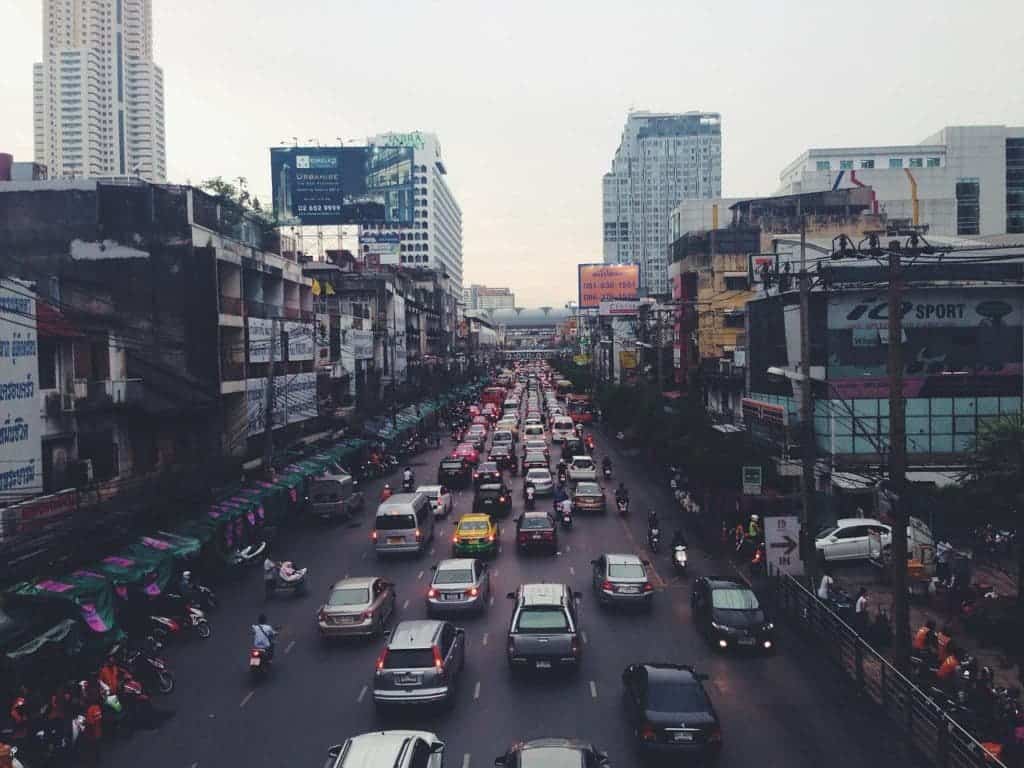
Urban air pollution has been classified by the World Health Organisation (WHO) among the top ten health risks humans face. One major source of air pollution is tailpipe emissions from vehicles, which become the most concentrated and dangerous at red lights and traffic jams. UK researchers pollution levels inside cars are 40 percent higher under these circumstances. Furthermore, their investigation suggests turning on the fan is the worst thing you can do for your health as you’ll basically funnel all that particle matter and noxious gases right into your lungs.
Last year, researchers from the University of Surrey showed that passengers stuck in traffic were exposed to 29 times more harmful particle pollutants than in free-flowing traffic. The same group led by Dr. Prashant Kumar now looked at what happens when drivers keep their windows open or fans running.
When cars stop at red lights, these go through various driving cycles like idling, acceleration and deacceleration. This pushes the engine which gobbles more fuel and spews more pollution from the tailpipe. At the same time, it’s likely many vehicles are queued at the light, especially in a busy city. What you wind up with is a cloud of concentrated emissions that take longer to disperse and accumulate in the air.
[panel style=”panel-danger” title=”WHO’s 10 greatest global health risks” footer=”Source: World Health Organization. 2002. The World Health Report 2002: Reducing Risks, Promoting Healthy Life. Geneva, Switzerland:World Health Organization.”]• being underweight
• unsafe sex
• iron deficiency
• air pollution
• unsafe water, sanitation, and hygiene
• high blood pressure
• tobacco consumption
• alcohol consumption
• high cholesterol
• obesity[/panel]
Kumar and colleagues found that when a car’s windows were closed but the fan was on, the exposure to urban air pollution was maximum if the vehicle was stuck in traffic. That’s because the air outside the car is much more polluted than inside it. Turning the fan on does nothing but suck all that dirty air in from the outside.
The research suggests that the keeping the car’s windows closed and the fan/heating off offers the lowest air pollution exposure — about 76% reduction of in-car pollutants. It’s also safe if you turn on the fan but keep only if it re-circulates the air inside the car without drawing anything from outside.
“Where possible and with weather conditions allowing, it is one of the best ways to limit your exposure by keeping windows shut, fans turned off and to try and increase the distance between you and the car in front while in traffic jams or stationary at traffic lights. If the fan or heater needs to be on, the best setting would be to have the air re-circulating within the car without drawing in air from outdoors,” Dr. Kumar said in a statement.
Air pollution is responsible for 3.7 million premature deaths every year around the world and costs society trillions of dollars.
- About 6 percent of all global deaths each year occur prematurely due to exposure to ambient air pollution. That’s higher than previously estimated not 10 years ago.
- In 2050, 6.6 million people are projected to die prematurely from air pollution.
- Air pollution kills more than HIV and malaria combined.
- China has the most air pollution fatalities numbering 1.4 million, followed by India with 645,000 and Pakistan with 110,000.
- In the US (2010), 54,905 fatalities were accounted to smog and soot. This ranks the country 7th on the air pollution fatality list.
- For industrial nations, farming takes a surprisingly large share of the soot and smog pollution. For instance, in the US, agriculture caused 16,221 of those deaths, second only to 16,929 deaths blamed on power plants. But in Europe, Russia, Japan and South Korea, agriculture was found to be the prime cause of the soot and smog deaths.


